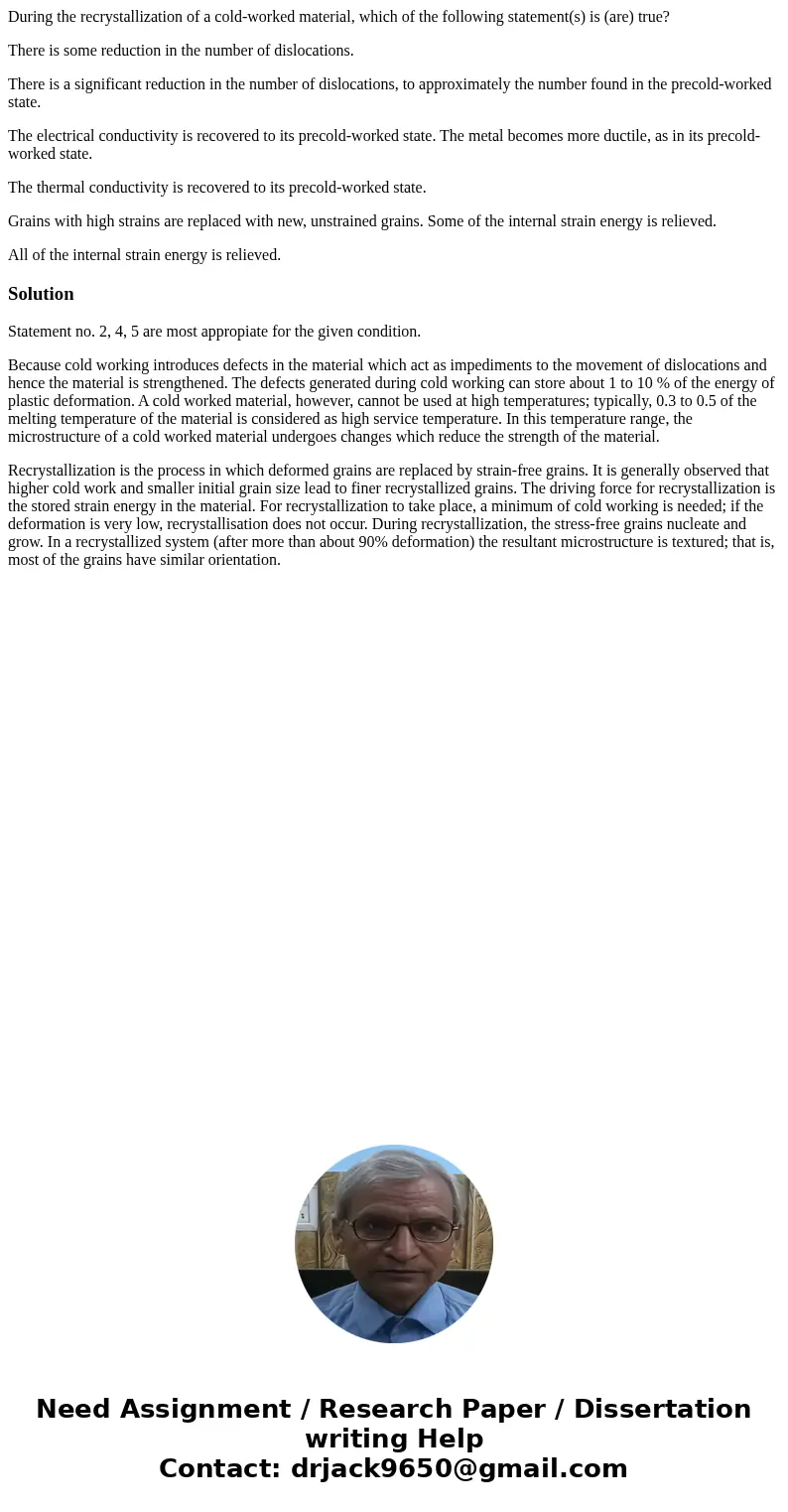During the recrystallization of a coldworked material which
During the recrystallization of a cold-worked material, which of the following statement(s) is (are) true?
There is some reduction in the number of dislocations.
There is a significant reduction in the number of dislocations, to approximately the number found in the precold-worked state.
The electrical conductivity is recovered to its precold-worked state. The metal becomes more ductile, as in its precold-worked state.
The thermal conductivity is recovered to its precold-worked state.
Grains with high strains are replaced with new, unstrained grains. Some of the internal strain energy is relieved.
All of the internal strain energy is relieved.
Solution
Statement no. 2, 4, 5 are most appropiate for the given condition.
Because cold working introduces defects in the material which act as impediments to the movement of dislocations and hence the material is strengthened. The defects generated during cold working can store about 1 to 10 % of the energy of plastic deformation. A cold worked material, however, cannot be used at high temperatures; typically, 0.3 to 0.5 of the melting temperature of the material is considered as high service temperature. In this temperature range, the microstructure of a cold worked material undergoes changes which reduce the strength of the material.
Recrystallization is the process in which deformed grains are replaced by strain-free grains. It is generally observed that higher cold work and smaller initial grain size lead to finer recrystallized grains. The driving force for recrystallization is the stored strain energy in the material. For recrystallization to take place, a minimum of cold working is needed; if the deformation is very low, recrystallisation does not occur. During recrystallization, the stress-free grains nucleate and grow. In a recrystallized system (after more than about 90% deformation) the resultant microstructure is textured; that is, most of the grains have similar orientation.

 Homework Sourse
Homework Sourse